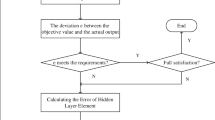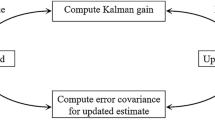Abstract
In order to predict the landslide disaster effectively, the prediction system of landslide disaster based on intelligent algorithm is constructed. Lianziya and Gushuwu are used as the research object. The applicability of RBF and BP algorithm in landslide deformation displacement prediction is analyzed and compared. Based on the cumulative displacement curve of the landslide deformation, the deformation of the landslide is divided into three main stages: initial deformation, uniform deformation and acceleration deformation. When the classical intelligent algorithm BP is used to predict the landslide deformation, the selection of network structure parameters has a great influence on the prediction results. By optimizing the parameters, the optimal network structure can be constructed, and better prediction accuracy can be obtained. The results show that the improved algorithms overcome the defects of the standard BP algorithm to some extent. The accuracy of prediction is improved. LMBP has the best prediction effect. The RBF has more advantages than the LM-BP algorithm for predicting landslide deformation, which is in good agreement with the landslide curve.





Similar content being viewed by others
References
Wang, D., Huang, X., Wang, M. D., et al. (2013). Application of gray GM(2,1) model to prediction of landslide deformation. Hydrogeology and Engineering Geology, 40(3), 121–125.
Huangqiong, C., & Zhigang, Z. (2013). Deformation prediction of landslide based on improved back-propagation neural network. Cognitive Computation, 5(1), 56–62.
Chen, J., Zeng, Z., Jiang, P., et al. (2015). Deformation prediction of landslide based on functional network. Neurocomputing, 149, 151–157.
Stumpf, A., Malet, J. P., Allemand, P., et al. (2015). Ground-based multi-view photogrammetry for the monitoring of landslide deformation and erosion. Geomorphology, 231, 130–145.
Xuguo, S., Lu, Z., Timo, B., et al. (2015). Landslide deformation monitoring using point-like target offset tracking with multi-mode high-resolution TerraSAR-X data. ISPRS Journal of Photogrammetry and Remote Sensing, 105, 128–140.
Schlögel, R., Doubre, C., Malet, J. P., et al. (2015). Landslide deformation monitoring with ALOS/PALSAR imagery: A D-InSAR geomorphological interpretation method. Geomorphology, 231, 314–330.
Sun, Q., Zhang, L., Ding, X. L., et al. (2015). Slope deformation prior to Zhouqu, China landslide from InSAR time series analysis. Remote Sensing of Environment, 156, 45–57.
Hu, X., Zhang, M., Sun, M., et al. (2015). Deformation characteristics and failure mode of the Zhujiadian landslide in the Three Gorges Reservoir, China. Bulletin of Engineering Geology and the Environment, 74(1), 1–12.
Vallet, A., Charlier, J. B., Fabbri, O., et al. (2016). Functioning and precipitation-displacement modelling of rainfall-induced deep-seated landslides subject to creep deformation. Landslides, 13(4), 653–670.
Rahmat-Allah, H., Habib, A., & Moein, P. (2013). A hybrid intelligent algorithm based short-term load forecasting approach. International Journal of Electrical Power and Energy Systems, 45(1), 313–324.
Lin, S. W., Ying, K. C., Lee, C. Y., et al. (2012). An intelligent algorithm with feature selection and decision rules applied to anomaly intrusion detection. Applied Soft Computing, 12(10), 3285–3290.
Barisal, A. K. (2013). Dynamic search space squeezing strategy based intelligent algorithm solutions to economic dispatch with multiple fuels. International Journal of Electrical Power and Energy Systems, 45(1), 50–59.
Kaveh, M., Dalfard, V. M., & Amiri, S. (2014). A new intelligent algorithm for dynamic facility layout problem in state of fuzzy constraints. Neural Computing and Applications, 24(5), 1179–1190.
Nancharaiah, B., & Mohan, B. C. (2014). The performance of a hybrid routing intelligent algorithm in a mobile ad hoc network. Computers and Electrical Engineering, 40(4), 1255–1264.
Azadeh, A., & Saberi, M. (2013). An intelligent algorithm for performance evaluation of job stress and HSE factors in petrochemical plants with noise and uncertainty. Journal of Loss Prevention in the Process Industries, 26(1), 140–152.
Acknowledgements
The paper is supported by Science and technology project of Ministry of transport (No. 2013318797110) “Research and application demonstration of highway slope disaster monitoring, early warning, prevention and control technology in Xinjiang Alpine mountainous area”. National innovative group fund (No. 41521002), “Early identification and monitoring and warning of potential hazards of major geological disasters in Western China”.
Author information
Authors and Affiliations
Corresponding author
Rights and permissions
About this article
Cite this article
Zuan, P., Huang, Y. Prediction of Sliding Slope Displacement Based on Intelligent Algorithm. Wireless Pers Commun 102, 3141–3157 (2018). https://doi.org/10.1007/s11277-018-5333-1
Published:
Issue Date:
DOI: https://doi.org/10.1007/s11277-018-5333-1




